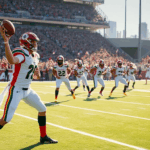Table of Contents
The allure of backstage passes
For many music fans, the idea of a backstage pass is synonymous with the ultimate concert experience. The thought of mingling with artists, witnessing the magic behind the curtain, and enjoying exclusive access is undeniably enticing.
However, the reality of backstage access is often far from the wild parties and glamorous lifestyles depicted in movies and media. In today’s music industry, backstage is a serious workplace, governed by strict rules and a well-defined hierarchy.
The evolution of backstage access
Backstage passes have evolved significantly since their inception. The modern backstage pass was introduced by Dave Otto in the 1970s, designed to control access as rock music became a booming business. These passes, often made of flexible materials with adhesive backing, became a coveted item, representing a ticket to a world few could enter.
Over the years, the backstage pass has transformed into a symbol of status, with different levels of access that dictate who gets to see what.
Understanding the hierarchy of backstage passes
Backstage passes come in various forms, each granting different levels of access.
At the bottom of the hierarchy is the “after show” pass, which allows fans to enter a designated area only after the concert ends. This experience can be hit or miss, with some lucky fans getting a chance to meet the band, while others may leave disappointed.
Next is the “pre-show” pass, which offers a brief meet-and-greet opportunity before the concert, typically reserved for contest winners or local media.
The VIP pass is where things start to get interesting. This pass often allows for more meaningful interactions with performers, as it grants access to the inner sanctum of the green room.
Here, fans might rub shoulders with industry insiders and enjoy better food and drink options. Higher up the ladder are the “local crew” and “working crew” passes, which are essential for those involved in the concert’s production. Finally, the coveted all-access pass is the Holy Grail of backstage access, granting entry to every area, including dressing rooms and on-stage access during performances.
The reality of backstage life
Despite the allure of backstage passes, the reality is often more mundane than glamorous. While there may be moments of excitement, the backstage environment is primarily focused on work. Artists and crew members are busy preparing for performances, and the time for socializing is limited. Additionally, security is tight, and privacy is paramount, making it challenging for fans to truly experience the backstage lifestyle they envision.
In conclusion, while backstage passes offer a glimpse into the world of music, they come with a structured hierarchy and strict regulations. The fantasy of wild parties and endless fun is largely a myth, replaced by the reality of a professional environment where access is earned and carefully controlled. For those lucky enough to receive a pass, the experience can be unforgettable, but it’s essential to understand the boundaries and respect the hard work that goes into every performance.





